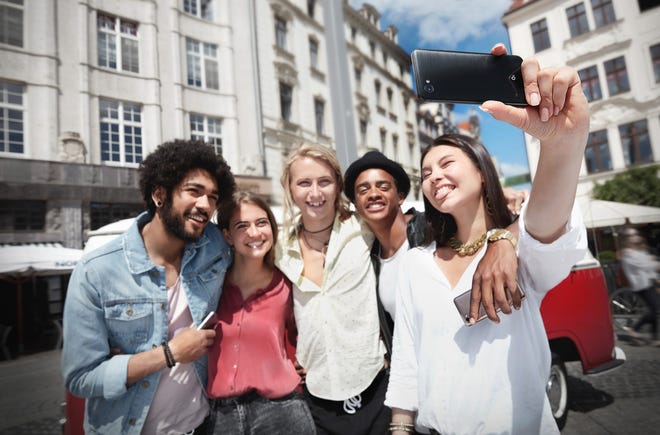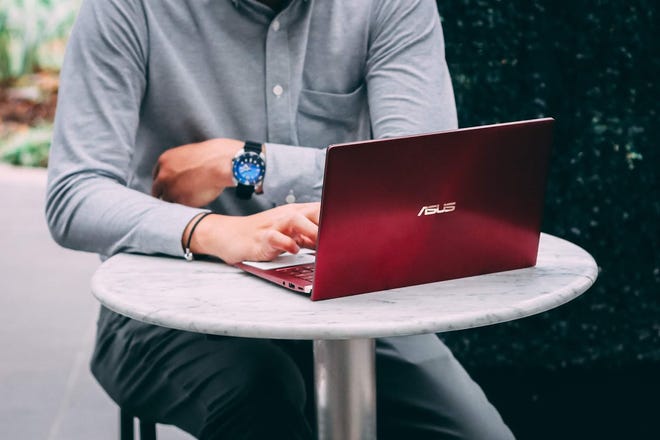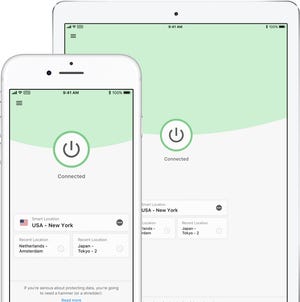
The arrival of November marks the unofficial kickoff to the travel season, be it over Thanksgiving weekend, Christmas road trips to see family next month, or perhaps a winter vacation down south.
But in the digital age, travelers face a few extra risks they we didn’t have to worry about before laptops, smartphones, tablets and other devices were included among typical travel gear. It’s worth it to make sure to avoid some unsafe behaviors, which could be exploited by criminals, to avoid putting yourself (and your data) in harm’s way.
Here’s some travel-related tech mistakes you might be making, and how to fix them.
Avoid posting pics to social media
While it may be tempting to post vacation photos in the moment, remember these posts are also broadcasting the fact your home is vacant at that time (insert the “face palm” emoji).
Yes, there are countless stories of travelers returning to a cleaned-out home, because they posted holiday pics to Facebook or Instagram, and didn’t quite know whom all their online “friends” were. Even if you’ve got a closed social network – where you’re super selective about whom can see your posts – a friend could always leave their feed open and others could see it (say, at work).
Instead, if you want to #travelbrag (a hashtag coined by Hotels.com), wait until you get back home. It can wait!
Don’t use public Wi-Fi hotspots
While airports and hotels offer free Wi-Fi, you’re putting your information at greater risk when using these public “hotspots.” Malicious types can more easily access your data on these than when you are on a private network. And you might think you’re joining a legitimate network, like “Miami Airport Wi-Fi” when in fact it’s a fake (“rogue”) network setup by someone nearby, who’s seeking to access travelers’ info.
Also, those who provide free Wi-Fi can (and often) collect and sell data about your browsing habits.

Another misconception: a public Wi-Fi hotspot is safe if there’s a password required, often given out by the establishment. It’s not much safer than not having a password if it’s freely given out to everyone indiscriminately.
If you can avoid them altogether, don’t use public Wi-Fi. Instead, consider your smartphone’s cellular connection by creating a personal hotspot. If you want to use free public Wi-Fi, at least use a Virtual Private Network (VPN) to browse anonymously. A VPN – ExpressVPN ($99/year) is an example – is a service you connect to that protects your data from outsiders.
Otherwise, your online activity can be tracked by your service provider, the government, advertisers, and malicious types. And no, this isn’t the same as enabling your browser’s “Private” or “Incognito” mode, as that simply wipes your history and cookies when you close the browsing session (but what you’re doing while online can still be seen.

And once you’re on a Wi-Fi hotspot, refrain from inputting personal information, such as passwords and usernames. And of course, never conduct financial transactions, such as paying bills, shopping online, day trading, or filing taxes.
Be smart with your smartphone
All smartphones let you lock it with a PIN code, password, pattern, or biometrics login (using a part of your body) to confirm it’s really you.
So long as you lock your device in some fashion, no one else can access your information should your device be lost or stolen. A thumbprint or face scan is most convenient, if your device offers it.
The same advice could be applied to your laptop or tablet: require a password to use all your tech. That way, if it’s lost or stolen, no one can access your private information.
Also, if you haven’t done so already, be sure to set up your device’s “Find My Phone” feature, so you can locate it on a map, if lost or stolen. If it’s stolen, never try to retrieve it yourself. Instead, work with the local authorities, just to err on the side of caution.
Use a smartphone case and screen protector, in case you drop your phone while traveling.
Some travelers choose not to have any important files with them on the road. Instead, they store everything in the cloud – such as OneDrive, Google Drive, iCloud, or Dropbox – and access what they need, virtually. Or you can use “remote desktop” software, such as Splashtop, to log into another PC, perhaps at home, and use it on your laptop while away, as if you were sitting in front of your home computer.
Don’t overdo it on data
Since it’s not recommended to use public Wi-Fi hotspots – at least not for more than, say, reading the news – be sure to have a healthy data plan if you’re using your smartphone while traveling.
But you can minimize the amount of data you use, in a few ways. For one, remember you can download a lot of content while you’re on your own private Wi-Fi network, before you leave home. Google Maps, for example, lets you download entire city maps to your phone to use offline should you expect to navigate around a new city.
The same goes for entertainment: rather than having the kids eating up precious data while streaming Netflix or Amazon shows or movies in the backseat, you can download most (but not all) videos to your phone or tablet before you depart. Most music services such as Spotify let you do so, too.

If you’re using your phone outside of the U.S., remember you’ll incur roaming fees, so contact your carrier to inquire about the best travel plan they have, so you don’t come home to a surprise on your wireless bill. Those who travel overseas might consider renting or buying a local SIM card to put into the phone, as it’ll likely be cheaper than paying your carrier.
Here’s a few more travel tips to keep your data and devices safe and secure while you are on the road:
- It’s not recommended to use a communal/public PC in a hotel’s business center or airport lounge, as a cybercrook could secretly install software to capture your passwords. But if you do, at least remember to log out of your online activity (such as a webmail service or social media account) before you leave.
- Don’t use public printers at a hotel’s business center, especially if it’s sensitive financial or work documents, as those could be hacked, too. And what about that print job you don’t think worked? It might spit out those papers after you’ve left.
- Consider a “privacy shield” on your laptop to avoid over-the-should snoopers. Unless they’re directly in front of your screen, which is where you are, it will look blacked out, as if the display was turned off. You can buy one based on the laptop’s screen size, such as 13 or 15 inches.
- It’s incredibly important to back-up your phone’s important files – irreplaceable photos, videos, contacts, text conversations, and so on – just in case the device is lost, stolen, or damaged. You can back up files to your favorite cloud-based service or to your home computer using a USB drive or Wi-Fi/AirDrop. While you’re at it, keep a digital scan of your passport on this cloud drive, just in case this is stolen or lost, too, which could be helpful should you need to get a replacement.
[“source=usatoday”]
 Techosta Where Tech Starts From
Techosta Where Tech Starts From